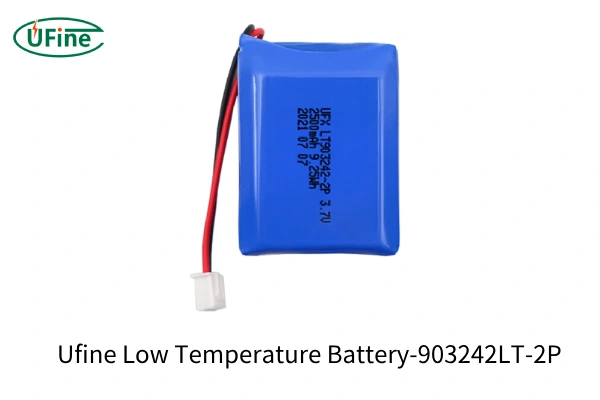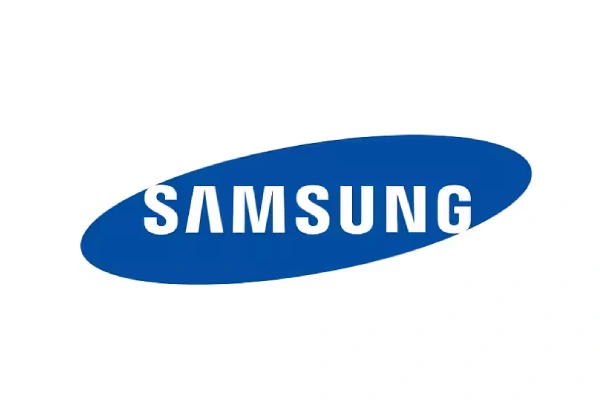Prompt and quick-charging batteries have become popular for storing and providing energy to electronic devices. These work in normal and optimal weather conditions. But what do they do when the temperature is too low or too high? Usually, the efficiency and output of batteries start to decrease at low and high temperatures.
Therefore, after detailed and beneficial research, engineers have introduced the concept of a Low-temperature Lithium-Ion Battery to make the machines work properly by optimizing the temperature range. With insulated electrodes, these proficient batteries are designed to drop the temperature in cold environmental conditions. Additionally, the extra protections make them resistant to sparks and any blast, making the connection secure. Many companies are deeply involved in the production of low-temperature batteries. They’re making smaller to larger sizes of Low-temperature Lithium-Ion batteries. Moreover, they come with low-voltage to high-voltage features.
Part 1. What is a low-temperature li-ion battery?
Get straight to it – A low-temperature lithium-ion battery is one type of Li-ion battery that is efficient enough to give high output efficiency in cold environments.
Traditional or old-version batteries reduce performance and output capacity at low temperatures. Usually, the electrolytes and electrochemical processes slow down as the temperature drops to a certain level.
Engineers have introduced highly functional batteries that work in harsh weather to address this. They have skillfully modified the electrolytes with various coatings for aerospace, outdoor vehicles, and other automobiles.
Part 2. Low-temperature li-ion battery technology
Low-temperature Lithium-ion battery is an advanced version of Li-ion batteries. These specialized cells have exceptional design and material to maintain performance in cold weather. Let’s get to the functional process of them
1. Advanced Electrolytes
Electrolytes are the critical functional factors of these high-potential batteries. They allow the Li-ions to move from the positive to the negative electrode while charging and discharging. In low-temperature modes, the additive layers do not allow the thickening and freezing of electrodes. In this way, they help the ions move and produce current productively. This advanced electrolytic feature makes them the best-conducting device for their gadgets.
2. Highly Modified And Adaptable Electrodes
The second factors to consider are cathodes (+) and anodes (—)—the opposite electrodes. These batteries have modified and revolutionized battery electrodes made of high-quality Cobalt Oxide and Graphite. These electrodes produce an optimal flow of current and electrons that perfectly charge your devices with no breakage at low temperatures.
3. Temperature Controlling System
A low-temperature lithium-ion battery incorporates a high-end thermal management system that regulates temperature fluctuation. These systematic controllers prevent overheating through the cooling system. Also, they maintain temperature by regulating heaters. Moreover, an optimal temperature system alternatively starts the cooling and heating system to optimally perform well in extreme conditions.
4. High-Quality Insulation System
There is a special external insulation setup that prevents the heat from going outside and protects the battery from getting cold and stuck. These batteries remain heated during work and aid internal temperature even when freezing external
al temperatures. This function makes Li-ion batteries the most innovative low-temperature batteries.
Part 3. Ufine low-temperature li-ion battery
The market comprises versatile and productive devices that need a compatible battery for charging and recharging. Ufine Battery has come up with the best options for low-temperature lithium-ion batteries. For your convenience, we recommend the following batteries to meet your requirements.
1. 704065LT
It is a polymer lithium-ion battery with a 3.7-voltage output and a built-in thermal stress controller. It is durable, produces 2000mAh power, and is ideal for various outdoor sensors and other aerospace devices. It is also compatible with smart home devices, mobile devices, and power banks. The temperature-controlling system maintains the circuit and temperature range from -40 °C to 55 °C. Moreover, it retains 80 % capacity after 500 cycles with 0.5C discharging conditions.
2. 104050LT
Ufine 104040 – a low-temperature Li-ion battery. It offers 2300 mAh power. The efficient in-built temperature controller maintains the charging temperature range of 0-45 C and -40℃ to 60℃ the discharging temperature. The life cycle of these potent batteries is 500 cycles ≥80%.
3. 903242LT-2P
This is a standardized battery for low-temperature usage with a 2500 mAh capacity and a 9.25Wh energy-producing range. It produces a nominal voltage of 3.7 V and a maximum of 4.2 V. The standard charging current is 500 mA, which is like the discharging current. Moreover, the life cycle goes as 500 cycles ≥80%, and the temperature storage range is- 20℃60℃. Ufine battery-903242LT-2P comes with a wide scope of applications in different industries.
Part 4. How to buy the best low-temperature battery?
With time, many industries have evolved into low-temperature lithium-ion batteries that reflect the diverse requirements of these energy storage equipment. However, you need to check the following specifications before buying lithium batteries: Here are the solutions:
1. Battery Compatibility
Every battery has a specific chemistry and compatibility with the device. For example, lithium-ion batteries are compatible with Vehicles and other electronics, while lithium-polymers are compatible with Radio Machines and Drones.
2. Battery Capacity
The battery capacity is the power storage that reduces up to 12%—20% when the temperature drops to −40 °C. Therefore, go for the batteries that are compatible with your device.
3. Battery Voltage
Batteries come with variable battery voltages. They drop by 16.4 V to 13.8 V in the temperature range of -40 C to 50 C.
4. Life Cycle
The average life cycle of a low-temp battery is 300 – 500 charge cycles, which works up to 3 years. So, go for the batteries with a long life cycle.
5. Charging and Discharging
The best batteries have charging temperatures between 32° F and 114° F. Specifically, those with discharging rates between -4° F and 130° F are the most recommended ones.
Part 5. Top 5 companies for low-temperature li-ion batteries
The initial and prior step is to search for the top-rated low-temp battery manufacturers. These are renowned brands or industries. There are a lot of companies like Tesla, Panasonic, LG, Samsung, etc., that provide great services to compete with the needs of a vast range of devices.
1.Tesla
It is the most famous brand in the market and has introduced high-end, low-temperature batteries. It covers every corner, from manual to electronic vehicles, simple devices to big spacecraft.
2. Panasonic

It is the best provider of low-temperature batteries to Tesla and the market. It offers versatile batteries to solve low-temperature device shutdown problems.
3. Ufine Battery
It ranks as the best low-temperature battery service provider. The Ufine batteries have high density, self-charging, quick-charging, optimal capacity, and other customization options. They perfectly fulfill all high-performance requirements, from small to large batteries to running devices.
4. LG Chem
It is a top brand that is doing great work in researching more features and developments of batteries. Gradually, it introduced more revolutionary properties and insulated batteries that can manage high to low temperatures.
5. Samsung
Samsung is a popular brand that is famous for delivering batteries for devices like tablets, vehicles, smartphones, and other electric appliances. These low-temperature batteries are highly sustainable and maintain thermal reactions efficiently.
Part 6. Conclusion
Concluding all the statements, I must say that Low-Temperature Lithium-Ion Battery is the most versatile and potent creation of engineers. From big vehicles to small toys and ground to space machines, you can find these all-rounded energy packs everywhere. Furthermore, the advanced technology and additive insulated layers keep them durable, easy to handle, and the best choice for harsh weather areas.
Related Tags:
More Articles

Top 10 Deep Cycle RV Batteries for Reliable Power
Looking for a reliable deep-cycle RV battery? Check out our guide on the top 10 best deep-cycle RV batteries to power your needs this year!
Top 10 High-Performance Batteries for High-Drain Devices
Are you looking for a high-performance battery that you can rely on for a high-drain device? Here are the top 10 best batteries for high-drain devices.
The Basics of Industrial Batteries: A Quick Overview
Learn what industrial batteries are and how they power machines. Discover their types and uses to boost your operations today.
Top 10 Lithium Motorcycle Batteries for Optimal Performance
Looking for a reliable Lithium motorcycle battery for optimal performance? Here’s a guide with this year's top 10 best Lithium motorcycle batteries.
How Long Will a 100Ah Lithium Battery Last?
Wondering how long a 100Ah lithium battery lasts? Get clear answers and tips for efficient use. Click now to learn more!











